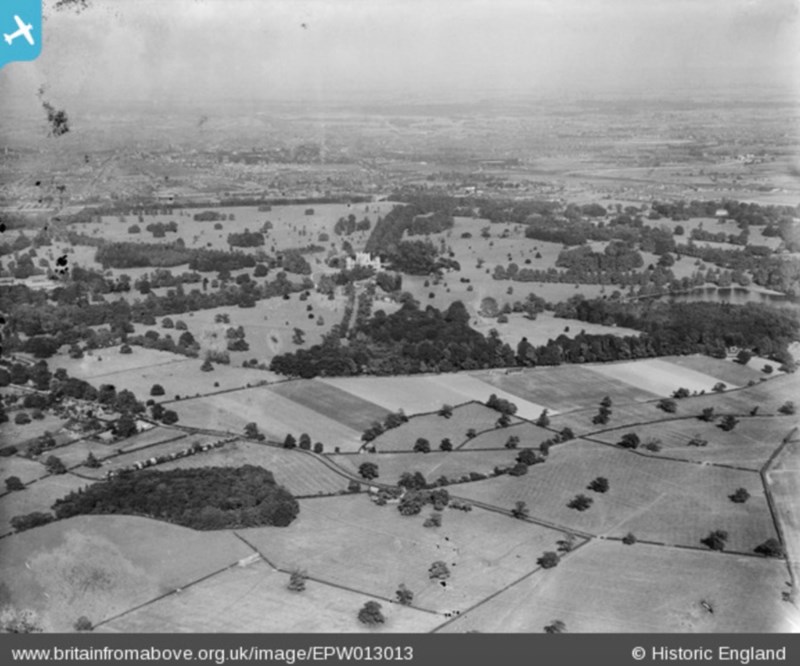Parkside in the 1930s
First published in The Link magazine October 2003, by Anne Houlton, Anne Roughton and Ann Chambers (Howard).
 Wollaton Park from the west in 1925 (showing a view of where Parkside is now)
Wollaton Park from the west in 1925 (showing a view of where Parkside is now)
Readers may be interested to know that before the bungalows which back onto Wollaton Park wall were built, numbers 28 and 30, the land was developed as a riding school owned by Harry Piggin. The open space in the front was the paddock where horses were exercised and jumping practice took place. The house now called The Old Farm House, number 42, was originally the site of Walton’s Farm and the house set back from the road at the end of a long drive was built for Lord Middleton’s gamekeeper. An opening in the park wall allowed access to the woods and the park, and a path beside the wall led up to Bramcote Lane, Wollaton village and St Leonard’s Church.
The constant activity of horses and ponies in the riding school was of tremendous interest to three little girls known as The Three Anns, two of whom lived opposite, who spent their entire time there (grudgingly allowing some time to be spent at school). There was a lot of work to be done, grooming the ponies, cleaning the harness, feeding and watering, cutting chaff on a big machine, and mucking out, all performed with enormous enthusiasm by the girls.
The best times were early in the morning and late evening when the ponies were ridden bare-back to the fields, where Wollaton Vale now runs, for grazing. Down The Bumpy (Parkside Rise) we would go, through the fields and over the Tottle brook to more fields and the beautiful pine woods on Bramcote Ridge, and then a long walk home again; a great adventure.
No doubt there must have been times when three youngsters of 7, 8 and 9 years old were in the way and a complete nuisance. The punishment meted out to us at times like that was total immersion in the huge stone drinking trough inflicted on us by John Manning, the head groom, or orders to slide a dozen bales of straw down the wooden stairs from the hay-loft above the stables.
The riding stables were eventually sold to Derek Edwards, son of Lionel Edwards the water colour artist, and later to Joyce and Margaret Stonehouse who rented the stables until the land was sold for building after the war.
Apart from the great sadness of watching seven beautiful lime trees felled in front of Walton’s farmhouse, it was a time of complete freedom and happiness for children who spent their time baking potatoes and chestnuts in the dens made out of sand-pits, wading and catching minnows in the Tottle brook and collecting all the dogs in the neighbourhood to take for walks over the hills.
But of course the best thing was caring for and riding our beloved ponies, whose names after more than sixty years, still bring a tingle of excitement, Safety, Joey and Tiddles!
WHaCS members have a further article on "The Parkside Story" in Wollaton Historical (issue no. 5), archived in the Members Only area of this website.
 Home
Home